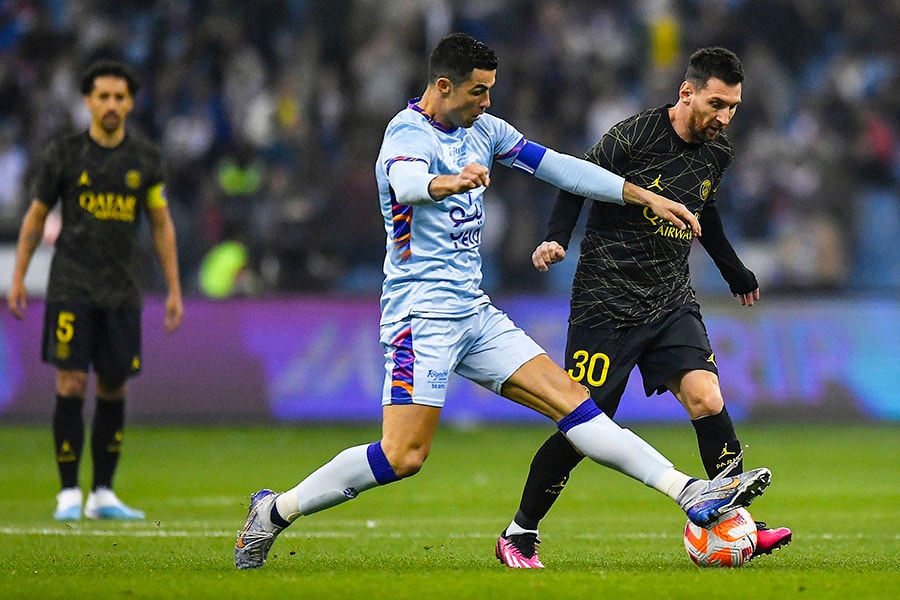
Explained: Messi vs Ronaldo in MLS vs Saudi Pro League
Cristiano Ronaldo recently said the Saudi league is better than MLS, the US league where his biggest rival Lionel Messi has recently moved to. Forbes India parses the two
 Cristiano Ronaldo in a recent statement said that he thought the Saudi Pro League was better than Major League Soccer. Recently Lionel Messi, transferred from PSG to MLS' Inter Miami CF; Photo by Aurelien Meunier - PSG/PSG via Getty Images
Cristiano Ronaldo in a recent statement said that he thought the Saudi Pro League was better than Major League Soccer. Recently Lionel Messi, transferred from PSG to MLS' Inter Miami CF; Photo by Aurelien Meunier - PSG/PSG via Getty Images
On Tuesday, after Al-Nassr’s 5-0 preseason loss to LaLiga side Celta Vigo, footballer Cristiano Ronaldo told reporters, “The Saudi league is better than MLS (Major League Soccer).”
The statement came days after Lionel Messi, Ronaldo’s biggest rival who recently took a transfer from Ligue 1 team Paris Saint-Germain to MLS’ Inter Miami CF, was unveiled at an event at Fort Lauderdale in Florida.
Ronaldo further added that he will not be returning to a European team or playing in the US. He said: "Now all the players are coming here ... In one year, more top players will come to Saudi Arabia.”
In fact, several prominent players including Ballon d'Or winner Karim Benzema from Real Madrid and N'Golo Kante from Chelsea, have joined Saudi Arabian clubs like Al-Ittihad. Many more have been approached by Saudi top teams, as per reports.
So, the question no longer is who’s the G.O.A.T—Ronaldo or Lionel Messi—but would you root for MLS or the Saudi Pro League (SPL). Forbes India does a comparative analysis:








